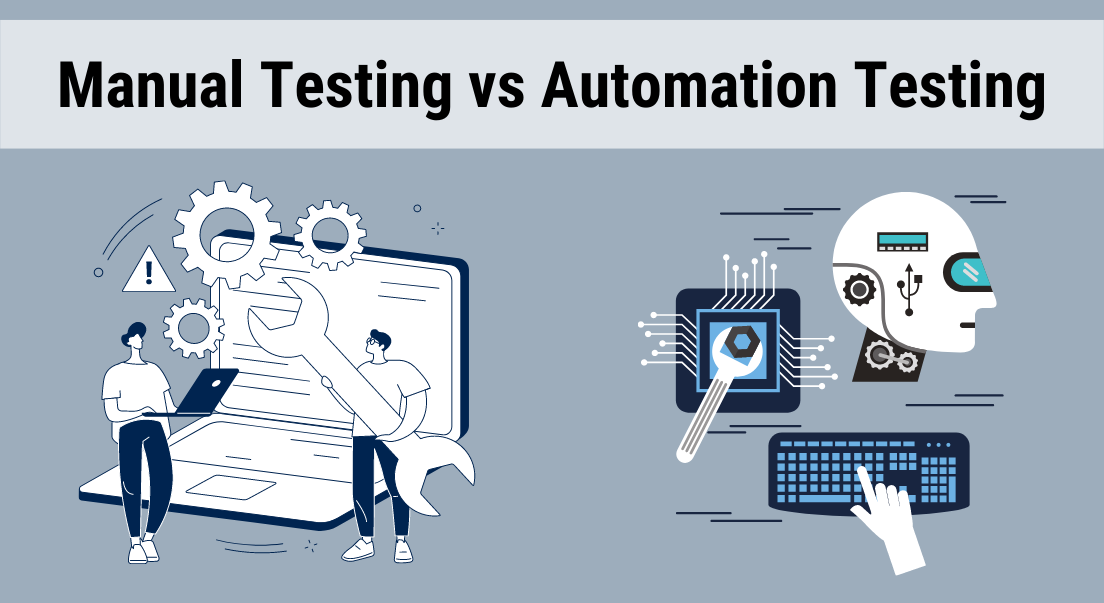Automation Testing: Secret Tips to Enhance Development Lifecycles
Automation Testing: Secret Tips to Enhance Development Lifecycles
Blog Article
Ensuring Success in Automation Checking: Trick Metrics, Obstacles, and Solutions Every QA Team Should Know
In the world of software quality assurance, the landscape of automation screening is ever-evolving, requiring a careful technique to ensure smooth procedures. The journey to grasping automation screening is led with subtleties that call for an eager eye for monitoring, analysis, and constant improvement. As the industry propels forward, the quest for optimum efficiency in automation screening stays a continuous search, prompting QA teams to equip themselves with the knowledge and strategies vital for accomplishment.
Relevance of Secret Metrics
Recognizing the relevance of key metrics is essential for assessing the efficiency and performance of automation testing procedures. Key metrics offer as quantifiable steps that give useful insights into various aspects of the screening procedure, such as examination insurance coverage, examination implementation time, defect density, and test instance performance. By evaluating these metrics, QA groups can determine bottlenecks, ineffectiveness, and areas for improvement within their automation testing structure.
One crucial aspect of essential metrics is their capacity to track development and keep track of the general wellness of the screening process (automation testing). They allow stakeholders to make informed decisions based upon data-driven insights, which can result in more reliable screening approaches and far better source allowance. In addition, vital metrics can assist groups established realistic goals, determine the success of automation efforts, and show the ROI of automation testing efforts

Typical Difficulties Encountered
Obstacles typically come across in automation testing processes can significantly affect the general efficiency and efficiency of QA groups. Automation screening may not cover all facets of testing, such as usability and individual experience screening, which still call for hand-operated intervention. Overcoming these challenges calls for appropriate preparation, calculated examination situation selection, robust upkeep procedures, adequate sources, and a clear understanding of the restrictions of automation screening.
Efficient Solutions for Obstacles
To resolve the challenges experienced in automation screening, implementing effective remedies is essential for enhancing the performance and performance of QA groups. One crucial remedy is to buy durable training programs for QA teams to ensure they have the required abilities to properly utilize automation devices. Training can connect knowledge gaps, enhance understanding of automation frameworks, and enhance scripting capabilities, inevitably bring about much more efficient examination creation and implementation.
One more important remedy is to develop clear communication channels within the QA group and with other stakeholders, such as programmers and project managers. Efficient interaction assists in lining up expectations, sharing progress updates, and immediately resolving concerns or obstacles that might occur during the automation screening process.

Tracking and Evaluation Techniques
Carrying out reliable tracking and evaluation techniques is important for making certain the success and effectiveness of automation screening processes. By using surveillance devices, QA teams can track the performance of examination scripts, determine bottlenecks, and pinpoint locations for enhancement. Real-time surveillance enables fast discovery of problems, allowing fast response and resolution. Additionally, analyzing test results and metrics provides valuable understandings into the click for more info high quality of the software being tested and the efficiency of the testing method.
One secret strategy in surveillance and evaluation is using dashboards that combine appropriate metrics and check it out KPIs in an aesthetically accessible layout. These control panels use an extensive introduction of test execution standing, test insurance coverage, problem trends, and various other critical details. Routinely assessing and evaluating these control panels can assist QA teams make educated choices, prioritize tasks, and optimize screening efforts.
Moreover, implementing automated informs and alerts based on predefined thresholds can boost positive surveillance and prompt treatment. By establishing up informs for performance deviations or test failings, teams can attend to problems quickly and avoid them from intensifying. On the whole, surveillance and evaluation strategies play an essential duty in making certain the effectiveness and success of automation screening initiatives.
Continual Enhancement Techniques
Enhancing the effectiveness of automation testing processes requires the regular refinement of methodologies and approaches. One key approach to boosting automation testing processes is to conduct normal reviews and retrospectives.

Verdict
Finally, it is important for QA teams to recognize the vital metrics, challenges, and options in automation testing to make certain success. By meticulously keeping track of and evaluating information, carrying out reliable services to usual challenges, and continually enhancing techniques, QA teams can optimize their testing processes and deliver top notch software program products. Abiding by these practices will eventually cause much more efficient and efficient automation testing techniques.
By assessing these metrics, QA groups can identify traffic jams, inefficiencies, and locations for improvement within their automation screening structure.
In addition, vital metrics can check out this site assist teams established practical goals, determine the success of automation campaigns, and demonstrate the ROI of automation screening efforts.
Difficulties frequently come across in automation testing processes can dramatically influence the overall performance and performance of QA teams. Automation screening might not cover all elements of testing, such as functionality and individual experience testing, which still call for hand-operated intervention.In conclusion, it is critical for QA teams to comprehend the key metrics, obstacles, and options in automation screening to make certain success.
Report this page